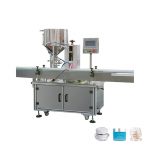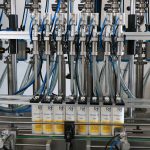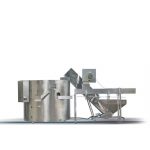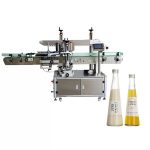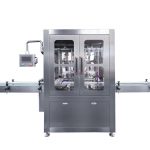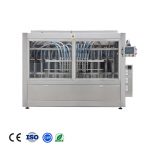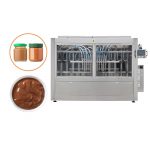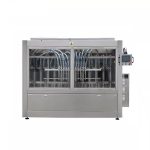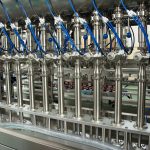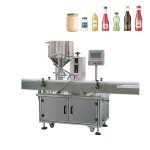What is ointment filling machine?
An ointment filling machine is a type of pharmaceutical equipment used to accurately dispense and fill ointments, creams, and other semi-solid products into containers such as tubes, jars, or bottles. These machines typically consist of a hopper for holding the product, a filling nozzle that dispenses the product into the containers, and a capping mechanism for sealing the containers after filling. Some ointment filling machines may also include features such as a labeler for applying labels to the filled containers and a quality control system for checking the accuracy of the filling process. Ointment filling machines are commonly used in the pharmaceutical and cosmetic industries, as well as in other industries that produce semi-solid products.
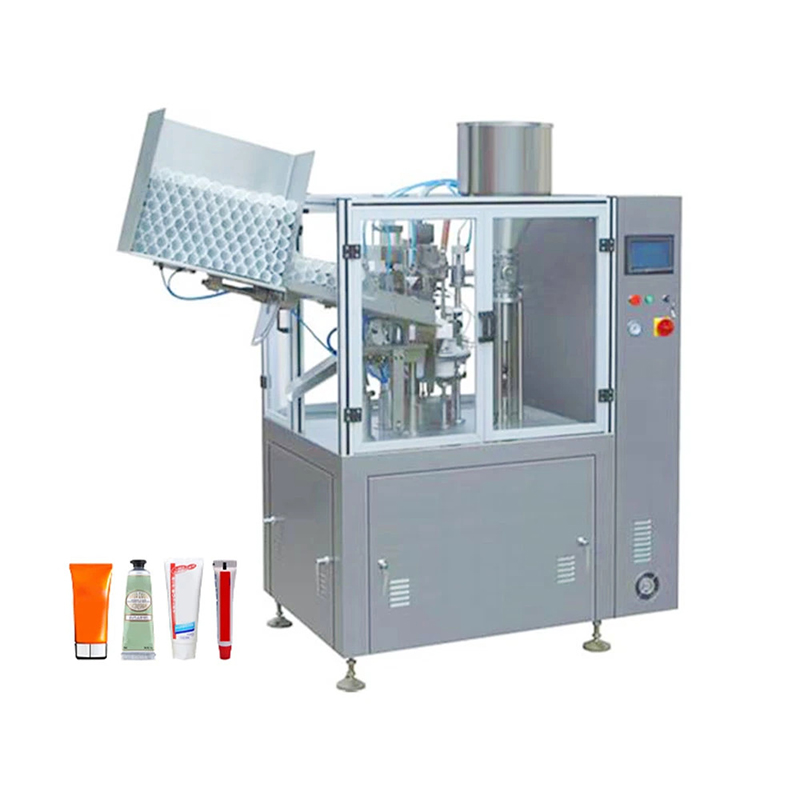
What is ointment?
An ointment is a type of medication that is applied topically, or to the skin, to treat a variety of conditions. It is a semi-solid preparation that is typically made up of a combination of oils, water, and waxes, and may also contain active pharmaceutical ingredients such as medications or other substances that are intended to treat a specific condition. Ointments are typically applied to the skin using a finger or a tool such as a cotton swab or spatula, and are used to treat a wide range of conditions including skin irritation, inflammation, infection, and dryness. Ointments are generally more effective at treating dry or scaly skin conditions because they tend to stay in place on the skin and provide a protective barrier, which helps to lock in moisture and keep the skin hydrated. They are also typically more effective than creams or lotions at treating conditions that require a longer period of contact with the skin, such as overnight treatment of a rash.
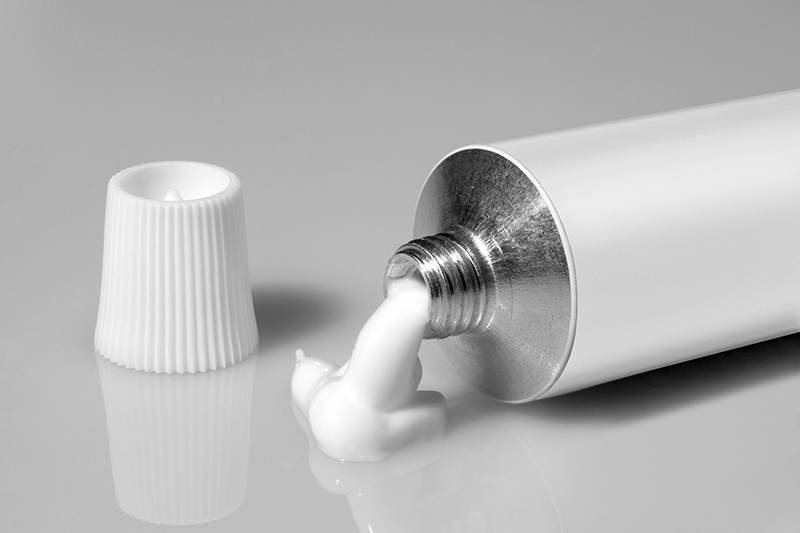
What are the common packaging ointment containers?
There are several common types of packaging containers that are used to package ointments, including:
- Tubes: Ointments are often packaged in tubes made of materials such as aluminum, plastic, or paper. Tubes are convenient for dispensing small amounts of ointment and are easy to use, especially when applied to hard-to-reach areas.
- Jars: Ointments may also be packaged in jars, which are typically made of plastic or glass. Jars are typically used for larger quantities of ointment and are more suitable for use in a home or professional setting.
- Bottles: Ointments may also be packaged in bottles, which are typically made of plastic or glass. Bottles are typically used for larger quantities of ointment and are more suitable for use in a home or professional setting.
- Pouches: Some ointments may be packaged in pouches, which are typically made of plastic or paper. Pouches are convenient for dispensing small amounts of ointment and are easy to use, especially when applied to hard-to-reach areas.
- Single-use packets: Ointments may also be packaged in single-use packets, which are convenient for on-the-go use and are easy to carry in a purse or bag. Single-use packets are also useful for dispensing small amounts of ointment and are easy to use, especially when applied to hard-to-reach areas.
Ointment tube filling machine
An ointment tube filling machine is a type of pharmaceutical equipment used to fill ointments into tubes. These machines typically consist of a hopper for holding the ointment, a filling nozzle that dispenses the ointment into the tubes, and a capping mechanism for sealing the tubes after filling. Some ointment tube filling machines may also include features such as a labeler for applying labels to the filled tubes and a quality control system for checking the accuracy of the filling process. Ointment tube filling machines are commonly used in the pharmaceutical and cosmetic industries to fill tubes with ointments, creams, and other semi-solid products. They are typically designed to handle a wide range of tube sizes and can be adjusted to fill tubes with different volumes of ointment.
What are the types of ointment filling machine?
There are several types of ointment filling machines, including:
- Semi-automatic ointment filling machines: These machines are operated manually and are typically used for small-scale production. They typically consist of a hopper, a filling nozzle, and a capping mechanism.
- Automatic ointment filling machines: These machines are fully automated and are typically used for medium to large-scale production. They typically consist of a hopper, a filling nozzle, a capping mechanism, and a control panel for programming and operating the machine.
- Volumetric ointment filling machines: These machines fill ointments using a specific volume measurement, such as milliliters or ounces. They are typically used for products that require precise dosing.
- Piston filling ointment machines: These machines use a piston to fill ointments. They are typically used for products with low to medium viscosity.
How does the ointment filling machine work?
The specific operation of an ointment filling machine may vary depending on the type and model of the machine. However, in general, an ointment filling machine works by using a hopper to hold the ointment, a filling nozzle to dispense the ointment into containers such as tubes or jars, and a capping mechanism to seal the containers after filling.
Here is a general overview of the steps involved in the operation of an ointment filling machine:
- The ointment is placed in the hopper of the filling machine.
- The filling machine is started and the ointment is dispensed into the containers through the filling nozzle.
- The containers are moved along a conveyor belt or through a rotary indexing table to the capping mechanism.
- The capping mechanism seals the containers by applying caps or lids to the containers.
- The filled and sealed containers are then moved to a labeling station, where labels are applied to the containers.
- The filled and labeled containers are then moved to a quality control station, where they are checked for accuracy and precision.
- If the filled containers pass the quality control checks, they are moved to a storage area or shipped to customers. If they fail the quality control checks, they are rejected and removed from the production line.
What are the components of ointment filling machine?
The specific components of an ointment filling machine may vary depending on the type and model of the machine. However, in general, an ointment filling machine may include the following components:
- Hopper: This is a container that holds the ointment before it is dispensed into the containers. The hopper may be equipped with a heating element to keep the ointment at the appropriate temperature.
- Filling nozzle: This is a device that dispenses the ointment into the containers. The filling nozzle may be adjustable to dispense different volumes of ointment.
- Capping mechanism: This is a device that seals the containers by applying caps or lids to the containers. The capping mechanism may be adjustable to handle different sizes and types of caps or lids.
- Conveyor belt or rotary indexing table: This is a device that moves the containers through the filling process. The conveyor belt or rotary indexing table may be adjustable to handle different sizes and types of containers.
- Control panel: This is a device that allows the operator to program and operate the filling machine. The control panel may include buttons, switches, and displays for setting and monitoring the filling process.
- Quality control system: This is a system that checks the accuracy and precision of the filling process. The quality control system may include sensors, cameras, or other devices that monitor the filling process and flag any deviations from the predetermined parameters.
- Labeler: This is a device that applies labels to the filled containers. The labeler may be adjustable to apply different sizes and types of labels.
- Storage area or shipping station: This is a place where the filled and labeled containers are stored or shipped to customers. The storage area or shipping station may be equipped with palletizers or other devices to prepare the containers for shipping.
Customize your ointment filling machine
There are several ways in which you can customize an ointment filling machine to meet your specific needs, including:
- Customizing the filling nozzle: You can customize the filling nozzle to dispense different volumes of ointment, or to fill different sizes and types of containers.
- Customizing the capping mechanism: You can customize the capping mechanism to apply different sizes and types of caps or lids to the containers.
- Customizing the conveyor belt or rotary indexing table: You can customize the conveyor belt or rotary indexing table to handle different sizes and types of containers.
- Customizing the control panel: You can customize the control panel to include buttons, switches, and displays that are specific to your filling process.
- Customizing the quality control system: You can customize the quality control system to include sensors, cameras, or other devices that are specific to your filling process.
- Customizing the labeler: You can customize the labeler to apply different sizes and types of labels to the containers.
- Customizing the storage area or shipping station: You can customize the storage area or shipping station to include palletizers or other devices that are specific to your shipping needs.
It is important to note that customizing an ointment filling machine may require additional time and resources, and may also increase the overall cost of the machine. It is important to carefully consider your specific needs and budget when deciding whether to customize an ointment filling machine.

